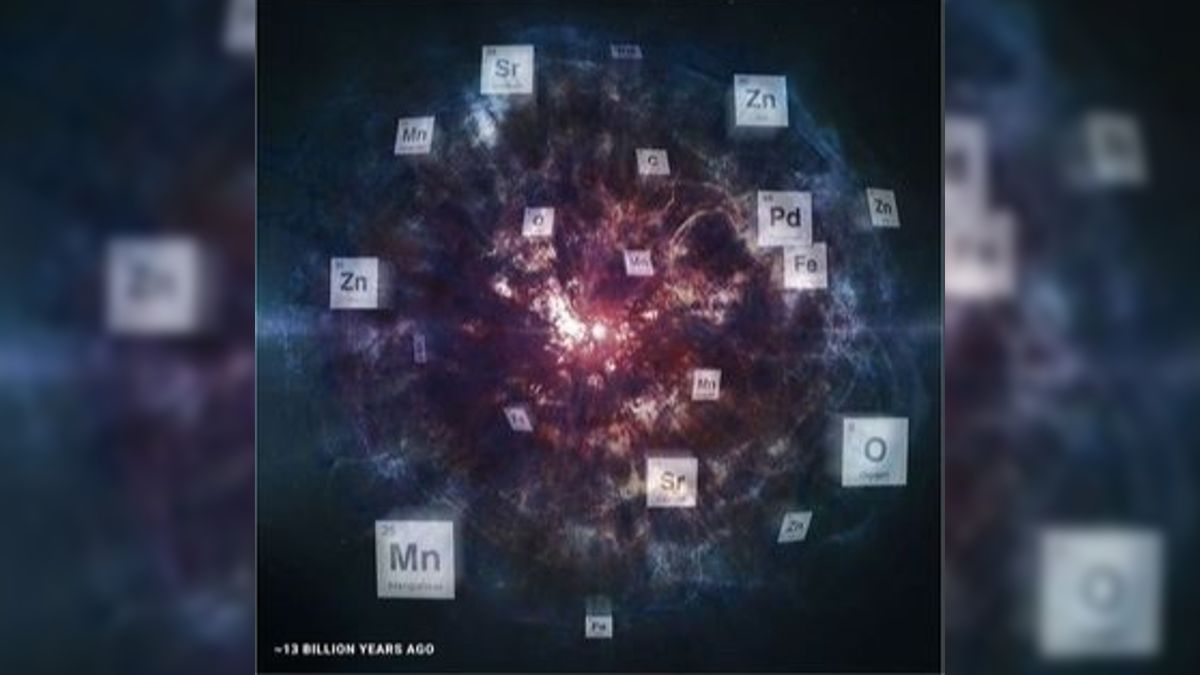
Scientists have discovered evidence of a massive star from the early universe that does not fit with our current understanding of the cosmos.
The ancient stellar oddball, which researchers have dubbed the "Barbenheimer Star," likely had a mix of elements in its core that has never been seen before — then, it died a seemingly impossible death while birthing an equally puzzling star in its place, a new study shows. (The name Barbenheimer is a reference to the contrasting films "Barbie" and "Oppenheimer" releasing on the same day last year.)
Researchers uncovered traces of the Barbenheimer Star after taking a closer look at J0931+0038, a distant red giant star. J0931 was first discovered in 1999 by the Sloan Digital Sky Survey (SDSS) — one of the largest and most detailed astronomical databases of the night sky — but had not been properly analyzed until now.
In a new study uploaded to the preprint server arXiv on Jan. 4, researchers turned the SDSS telescopes in New Mexico back toward J0931 and captured a detailed spectrum of the star's light, which was later verified by follow-up observations from the Giant Magellan Telescope in Chile. These spectra revealed that J0931 seemingly had an extremely odd metallicity, or chemical composition, with an unusually high concentration of heavy elements. (These results have not yet been peer-reviewed.)
Related: Aftermath of 2 star explosions captured in breathtaking new NASA image
Using the newly acquired data, the research team pieced together how J0931 formed via a process known as stellar archaeology. This revealed that the star was birthed from the supernova remnant of an even larger star — between 50 and 80 times more massive than the sun — that dates back as far as 13 billion years ago, only around 700 million years after the Big Bang.
The metallicity of the parent star (Barbenheimer) was likely equally as weird as that of J0931 before it blew up, which would have been completely different from other known stars in the early universe.
"We've never seen anything like this," study lead author Alex Ji, an astrophysicist at the University of Chicago, said in a statement. "Whatever happened back then, it must have been amazing."
J0931's metallicity was strange for three reasons. First, the star had unusually low levels of lighter elements such as magnesium, sodium and aluminum, which are normally more abundant in stars. Second, it had an unusually high amount of midweight elements such as iron, nickel and zinc. And finally, it had an "overabundance" of heavier elements like strontium and palladium, according to the researchers.
"We sometimes see one of these features at a time, but we've never before seen all of them in the same star," study co-author Jennifer Johnson, an astronomer at The Ohio State University, said in the statement.
Most stars have the reverse metallicity of J0931: They have higher levels of lighter elements and lower levels of midweight and heavier elements. This is because stars are made predominantly of hydrogen and helium, which fuse together in the stars' cores to create heavier elements. These new elements, which are much less abundant, eventually fuse into heavier and heavier elements.
It is therefore hard to explain why J0931 has such and abundance of heavy elements because it doesn't seem to have a high enough concentration of lighter elements to have created them.
"Amazingly, no existing model of element formation can explain what we see," said study co-author Sanjana Curtis, an astronomer at the University of California, Berkeley. It "almost seems self-contradictory," she said.
J0931's unusual metallicity would have partially been inherited from the ingredients that the Barbenheimer Star spit out when it exploded. This means that the parent star would likely have had a similarly inverted metallicity. This is even stranger, because in the early universe, stars shouldn't have existed long enough to have created such high concentrations of heavy elements, the team said.
But what's even stranger is that the Barbenheimer Star should have never gone supernova, the researchers wrote. In theory, a star with Barbenheimer's predicted mass should have collapsed into a black hole rather than exploding outward. At the moment, the study team cannot explain why this collapse didn't happen.
The only way for scientists to learn more about the Barbenhaimer Star and its bizarre composition is to search for other similar stellar oddballs from the early universe to uncover more pieces of this cosmic puzzle.
"The universe directed this movie, we are just the camera crew," study co-author Keith Hawkins, an astronomer at the University of Texas at Austin, said in the statement. "We don't yet know how the story will end."







